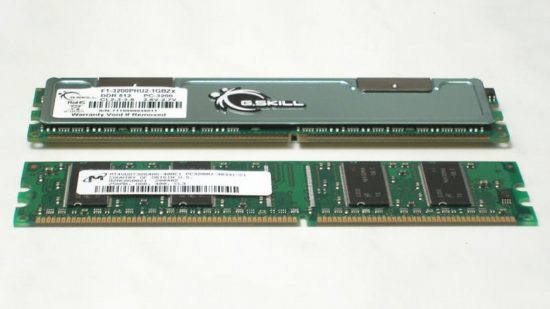I was recently sent an image that’s only available privately for JEDEC members. It shows that the memory standards body has already set out its road map up to 2030, with the memory data rate increasing steadily over the next ten years, where it tops out at an effective frequency of 24GHz, up from DDR4’s 3200MHz today.
The graph shows the ‘socket bandwidth’ target increasing by 20 per cent every year, which in this case alludes to server platforms with ultra-wide, 8-channel memory systems. However, while the big bandwidth numbers won’t make it into desktop PCs, we’ll benefit from the same tech as it trickles down into smartphones, laptops and PCs.
As we roll into DDR5 this year at 4600MHz, JEDEC expects this tech to scale up to 8000MHz by 2024, and that’s the ‘official’ plug-and-play spec, not just overclocked modules. This is followed by DDR6 launching in 2025 at 9600MHz and scaling beyond 16GHz by 2028.
Considering that DDR4 launched six years ago, and in that time scaled from 2133GHz to 3200MHz, comparatively, JEDEC wants to grow memory bandwidth at 10x per year this decade vs past decade. This is an extremely aggressive road map, and it’s surprising – until recently, JEDEC members were talking about DDR5 being the ‘last generation’ of DRAM while actively looking for alternative technologies.
It seems that, thankfully, the ‘next gen problem’ has been solved, as DDR6 will introduce more advanced PAM4 signalling between CPUs and memory modules. Very simply, this packs in more data per clock, but it makes the data signal much more complicated, and requires encoding and decoding hardware at each end, which in turn requires more power to process.
PAM4 signalling is already being used in PCIe 5 and GDDR6X tech, among other data centre-grade hardware, so while it’s not a new technology, it’s currently very expensive to implement.
Can the cost come down fast enough for it to be accessible to PC builders, or will DDR6 remain solely in the realm of servers? It’s hard to say – we could look at PCIe 4, which has been around for a couple of years already in the AMD X570 platform, and sadly those motherboards have yet to drop in price at all.
When Intel finally caught up with its Z590 chipset this year, it followed AMD’s premium-pricing strategy, even if the chipset itself has no PCI-E 4 lanes. This trend doesn’t bode well for future performance PC builds.
Another factor is power use and heat. The explosive growth in data rate has to be offset by similarly reducing the energy-per-bit transferred, otherwise every DIMM is going to need some serious cooling. The bad news is that memory manufacturing has effectively hit a wall at 10nm. This is similar to Intel’s long-time 14nm situation, where CPU clock speeds have scaled north of 5GHz, with power use also being pumped up all the time.
We’re already faced with CPUs that peak at nearly 300W, and GPUs that draw twice that, so how much power is a premium gaming PC going to require in the DDR6 era?
Of course, there will be some overlap between memory generations – it’s not as if DDR4 will disappear as soon as Intel launches the first DDR5 platform later this year. The same will happen when DDR6 arrives, so a DDR5 kit should last through multiple upgrades.
